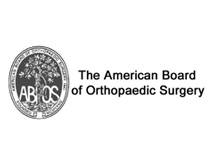Borderline Dysplasia

What is Borderline Hip Dysplasia?
Hip dysplasia is a medical condition where your acetabulum (hip socket) does not fully cover the ball-like head of your femur (thighbone). The condition is usually present at birth. It can cause pain, affect hip movement, reduce stability and lead to arthritis later in life. Borderline hip dysplasia is a mild case of hip dysplasia that is usually diagnosed in young adults.
Causes of Hip Dysplasia
At birth, your hip joint is made of soft cartilage that hardens into bone over time. During this period, the ball and socket help mold each other so that they develop appropriately and fit well. If the ball is not in the proper position, the socket may not form correctly and may end up being too shallow. This can happen when the space within the womb becomes constrained shortly before birth.
Who is at Risk of Developing Hip Dysplasia?
Hip dysplasia may be hereditary. It commonly affects girls. The risk is higher if you are born in the breech position or with foot deformities.
Symptoms of Borderline Hip Dysplasia
Symptoms or signs of borderline hip dysplasia vary according to age. They include:
- Difference in leg length and hip flexibility in infants
- Pain in your groin, lateral hip and even in the buttock
- Limping
- Clicking and catching during physical activities
- Instability sensation in your hip
Complications of Borderline Hip Dysplasia
Borderline hip dysplasia may lead to:
- Partial dislocation of your hip joint
- Damage of soft cartilage at the rim of the socket
- Degeneration of cartilage (osteoarthritis)
Diagnosis of Borderline Hip Dysplasia
Borderline hip dysplasia can be difficult to diagnose as it might not cause problems until you are a young adult. When you present with symptoms, your doctor will perform a thorough physical examination including tests for impingement. A neurovascular examination is also performed. Imaging tests such as X-rays, ultrasound or MRI are performed. Measurements on your hip X-ray help your doctor determine if you have borderline hip dysplasia.
Treatment of Borderline Hip Dysplasia
Treatment for borderline hip dysplasia depends on the stability of your hip joint. Your doctor may recommend both non-operative and operative treatments.
Non-operative treatments include:
- Physical therapy (strengthening the muscles around the hip joint)
- Activity modification
- Medications
- Intra-articular injections
Surgical procedures that may be recommended include:
- Hip arthroscopy to address impingement, labral tears and CAM deformity
- Osteotomy to improve stability by reorienting the socket
Treatment focuses on reducing pain, improving movement and stability, and mitigating the risk of early arthritis.










